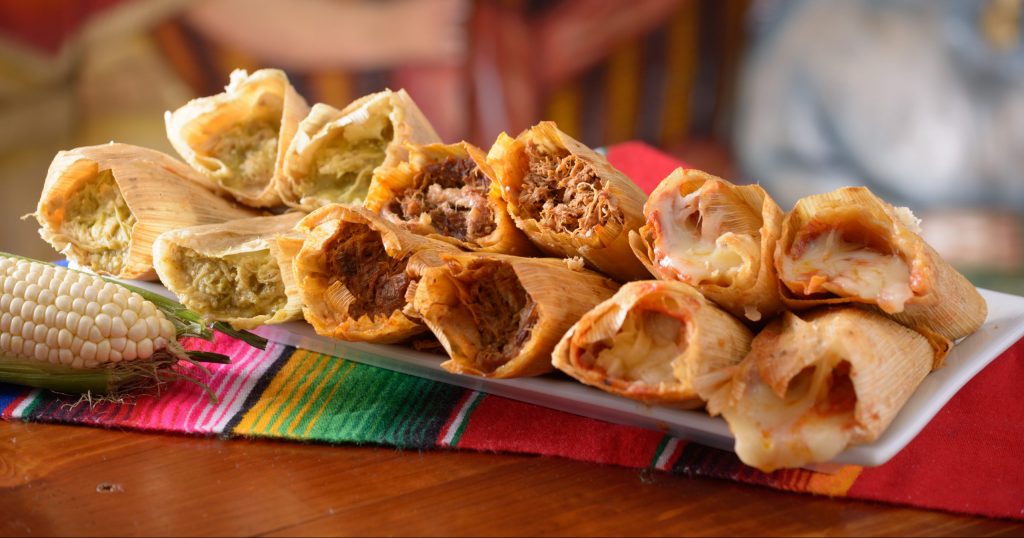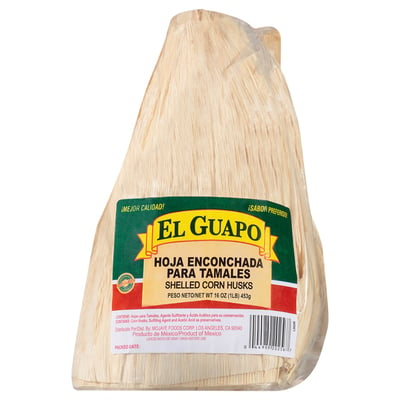For many families with Latin heritage, it’s a tradition to gather around the kitchen with family and prepare dozens of sweet and savory homemade tamales. If you’re new to tamale making, starting can be quite intimidating, but we’re here to help you! Read our easy-to-follow Tamale Making Guide to learn about this fun process..
Table of Contents
What are Tamales
Simply put, tamales are a traditional made with a nixtamalized corn dough. You may ask, “what does nixtamalized mean?” Nixtamalized means that an alkali solution has been added to dried corn kernels to transform them into nixtamal, a product that is more workable, tasty, and nutritious than it would be otherwise. Tamales are prepared both sweet and savory, with and without fillings, and steamed in a corn husk or banana leaf. In our guide, we’re covering Mexican-style tamales prepared with corn husks.
Making Tamales
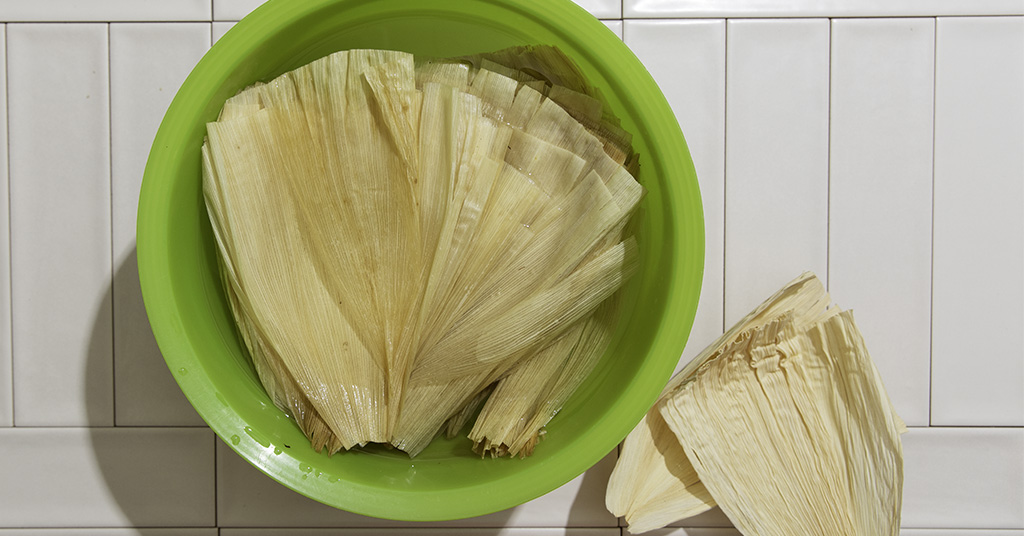
How to Prepare Corn Husks for Tamales
Corn husks can’t be used right out of the bag. They need to be soaked in hot water for at least 1 hour prior to tamale making so they don’t crack when you fold them. Just fill a large container with hot water and submerge the corn husks by placing a heavy weight bowl on top. Corn husks should be much softer and easier to fold once they’re ready. You can keep the corn husks in water, to keep them soft and moist, while you’re preparing your masa.
How to Make Masa for Tamales
Masa is the main ingredient in tamales and it’s important to have plenty on hand. If you’re making your own masa mixture, we recommend picking up a few bags of Maseca masa mix.
Serving Size: Makes approximately 16 tamales, considered 1 batch.
Ingredients:
- 4 cups Maseca corn mix
- 3 to 3 1/2 cups of water (or chicken broth if you’re making savory tamales)
- 2 tbsp. baking powder
- 2 tsp. salt
- 1 1/3 cups lard or vegetable shortening
Directions:
In a large mixing bowl, combine all dry ingredients and mix by hand. Add the water or chicken broth and mix thoroughly with your hands until there is a soft-moist dough and set aside. In a separate bowl, mix lard or vegetable shortening until its texture is light and fluffy, then add to the masa mixture and mix by hand until it’s smooth and slightly sticky. The end texture you’re looking for is a soft, moist, and pliable masa that sticks to your fingers. It shouldn’t be too wet or runny and not too dry where it crumbles easily, if necessary, add more liquid or corn mix to reach the desired consistency. To keep the masa moist, keep it covered with a damp cloth while it’s not in use.
Alternatively, you can pick up already prepared masa at our meat department and skip this step entirely!
Tamale Filling Recipes
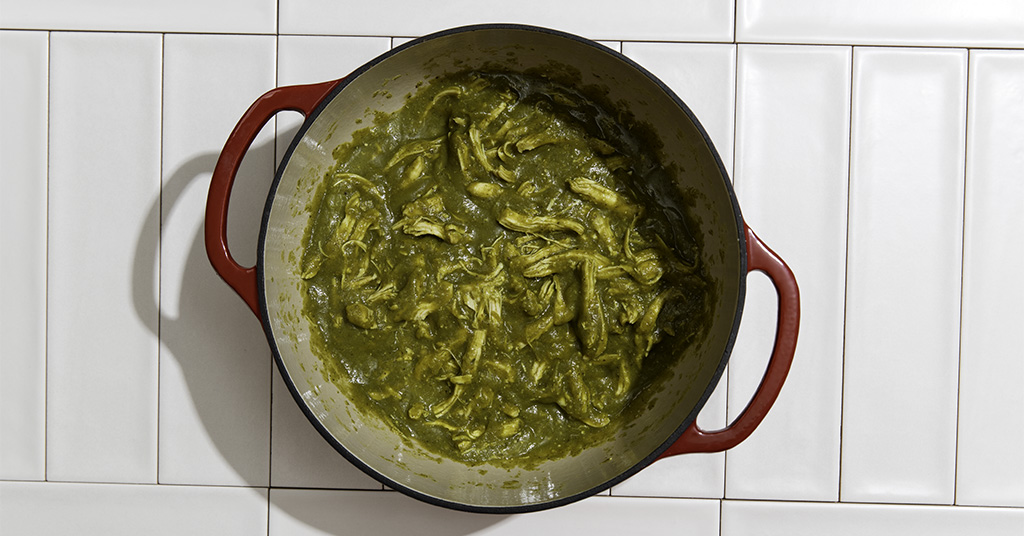
Green Chicken (Chile Verde) Tamale Filling
Using a blend of spicy green peppers, onion, garlic, cilantro and Mexican spices gives this chicken its unique color and flavor! Make the filling the night before you assemble the tamales so it’s easily on hand when you need it.
Ingredients:
- 2 lbs. chicken breasts, poached and shredded
- 1 1/2 lbs. tomatillos, peeled and washed
- 1 quarter of a white onion
- 2 jalapeño peppers
- 2 serrano peppers
- 2 poblano (pasilla) peppers
- 2 cloves garlic
- handful of fresh cilantro
- 1 tsp. chicken bullion
- 1 tbsp. neutral oil
- salt, to taste
- pepper, to taste
- 1 tsp. cumin
Directions:
In a large stockpot, simmer chicken breasts with salt until cooked through. Remove chicken from the water, allow to cook, and shred into bite sized pieces. Meanwhile, preheat oven to 400 degrees farenhieght. Place the tomatillos, jalapeños, serranos, poblanos, and garlic on a roasting sheet and roast until blistered and cooked through. Remove the stems and seeds of the peppers if you wish to reduce the heat. Once they are finished roasting, place the poblano peppers in a heat safe container with a lid and allow them to steam for a few minutes. Peel the skin off from the poblano (pasilla) peppers, remove the top of the pepper, and devein. Place the all the peppers, onion, tomatillos, garlic, cilantro, cumin, and chicken bullion powder in a blender and puree until smooth. Adding a splash of water if necessary. In a large deep skillet, heat oil over medium heat and add the chicken along with the chile verde sauce. Stir and allow the sauce to simmer for at least 20 minutes, seasoning with salt and pepper to taste.
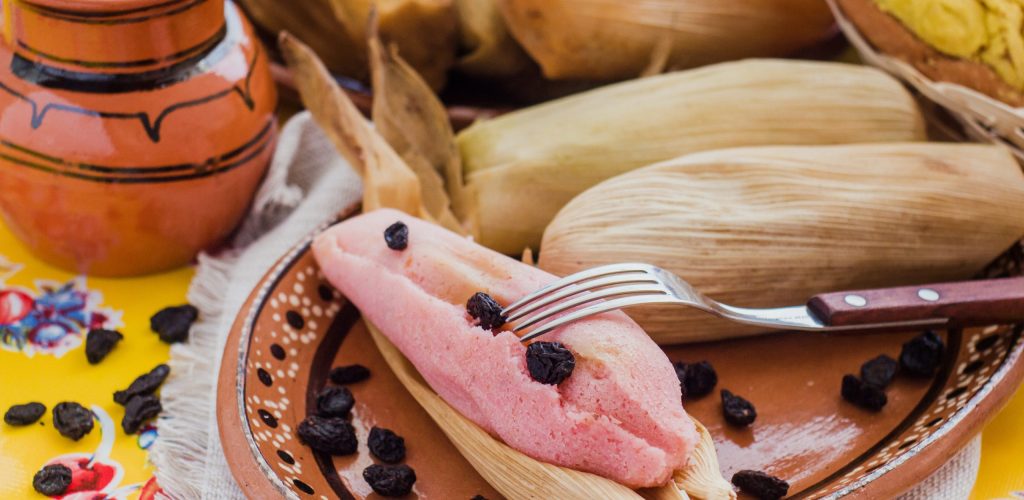
Strawberry Tamale Filling
Sweet strawberry tamales are a treat during the holiday season. They are especially good with a morning cup of coffee, topped with a bit of condensed milk, and eaten alongside friends and family.
Ingredients:
- 1 batch of prepared masa + 1/2 a cup of masa mix
- 1 lbs. of strawberries, chopped
- 1 1/2 cups of strawberry jam
- 1 cup of granulated sugar
- 2 14 oz cans of Stater Bros. sweetened condensed milk divided
- 1 stick of unsalted butter, melted
- A few drops of red food coloring (optional)
Directions:
Using the prepared masa, mix all of the ingredients except for 1 can of condensed milk. The remaining condensed milk may be used for garnish.
How to store tamale fillings
Tamale fillings can be stored in an air-tight container in the fridge for up to 2 days. There is no need to heat the filling before assembling the tamales.
Shop for all the Ingredients for Homemade Tamales at Stater Bros.
How to Fill and Fold a Tamale
Filling and folding tamales seems to be the part everyone worries about. We promise it’s easier than it looks! Once you’ve got a system down, you’ll be making dozens and dozens of tamales in just a few minutes. Better yet, turn it into a tamale making party by getting together with friends and family.
Which side of the corn husk is used to make tamales?
Corn husks have a smooth and a bumpy side. It’s best to use the smooth side to spread your masa, and it’s easier too! Corn husks naturally fold inward so that the bumpy side is the outer part of the husk.
How to fill a tamale?
If you’re preparing a tamale with a filling use approximately 3-4 ounces of masa (use the same size spoon for the accuracy) and spread an even layer of masa on the smooth side of the corn husk. If your tamale has no filling (like our strawberry tamales), use approximately 5-6 ounces of masa. Hold the husk open with one hand, with the widest part on top and begin your masa layer towards the lower center, pushing the masa in an upward motion towards the top. If your leaves are extra large add more masa. Stop spreading before you reach the tip of the husk and making sure to leave an even portion of the husk bare around the masa. You are looking for a rectangular shape of masa, however tamales are forgiving and the masa does not need to be perfectly spread. If you’re adding a filling, use approximately 2 ounces of your filling to the center on top of the masa.
How to fold a tamale?
Once you’ve finished spreading masa on the corn husk, take one of the sides of the husk and begin to close the tamale by holding the husk to the center. Then, take the unfolded side and bring it to the middle to overlap the other side of the husk. Finally, fold the bottom portion upwards toward the folded parts and slightly push the filling upwards.
How to Cook Tamales
Tamales are steamed and very easy to cook. Simply take a large stockpot with a steam tray, fill it with water (staying below the steam tray), cover the bottom with one layer of husks, and stand tamales up with the open end pointing towards the top. Cover the tamales with a clean damp kitchen cloth, close the lid, and bring to a boil. Allow the tamales to steam for approximately 1 to 1 1/2 hours depending on how many tamales you are cooking. Make sure to keep enough water boiling on the bottom and refill as necessary. To test whether the tamales are finished cooking, carefully remove one from the pot with tongs and pull off the husk. Once tamales are fully cooked, masa easily releases from the husk without any sticking.
Now that you know how to make tamales from scratch, it’s time to get your family together and make new memories and traditions. However, be careful because tamales can be quite addicting!
Pick up everything you need from your local Stater Bros.
